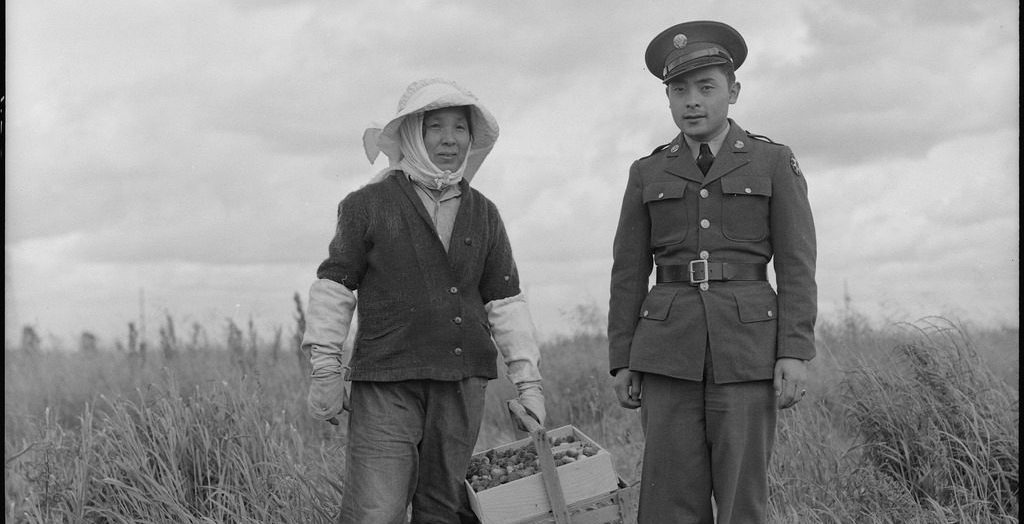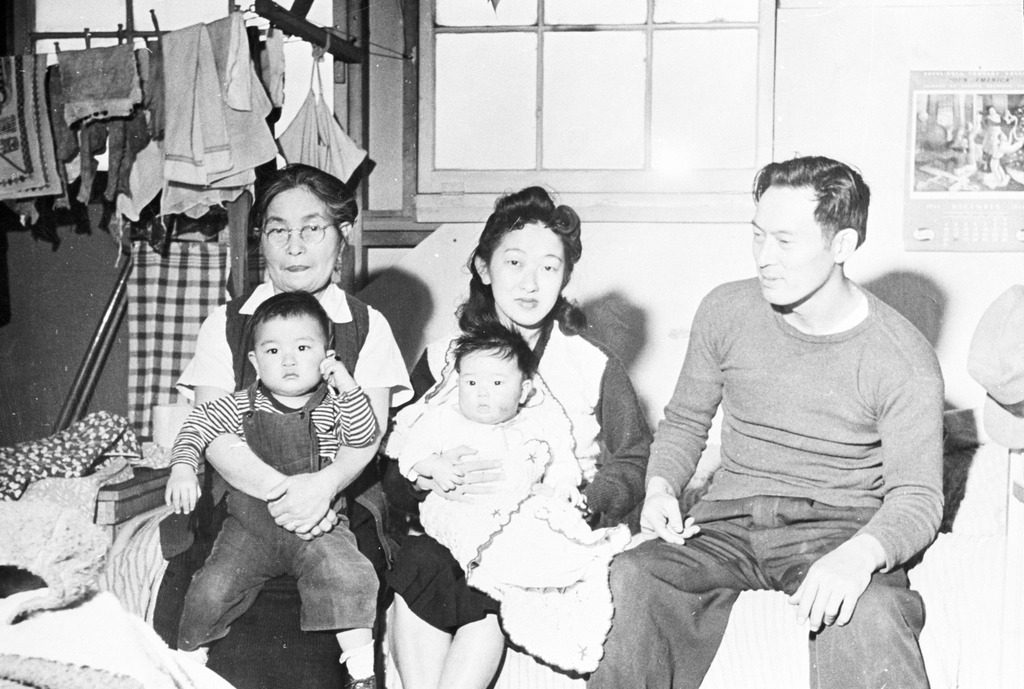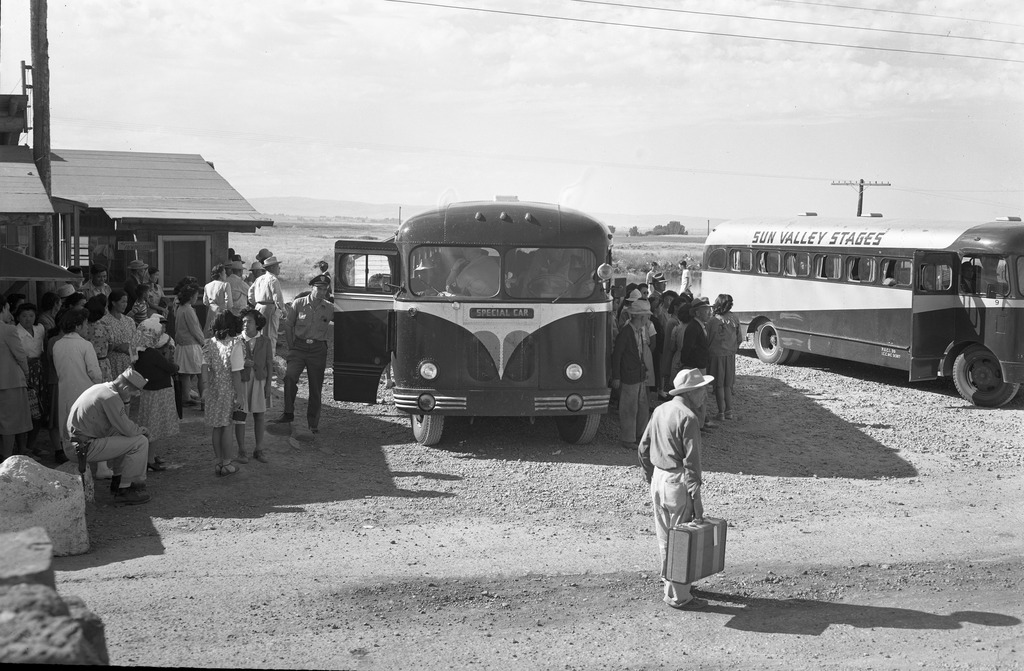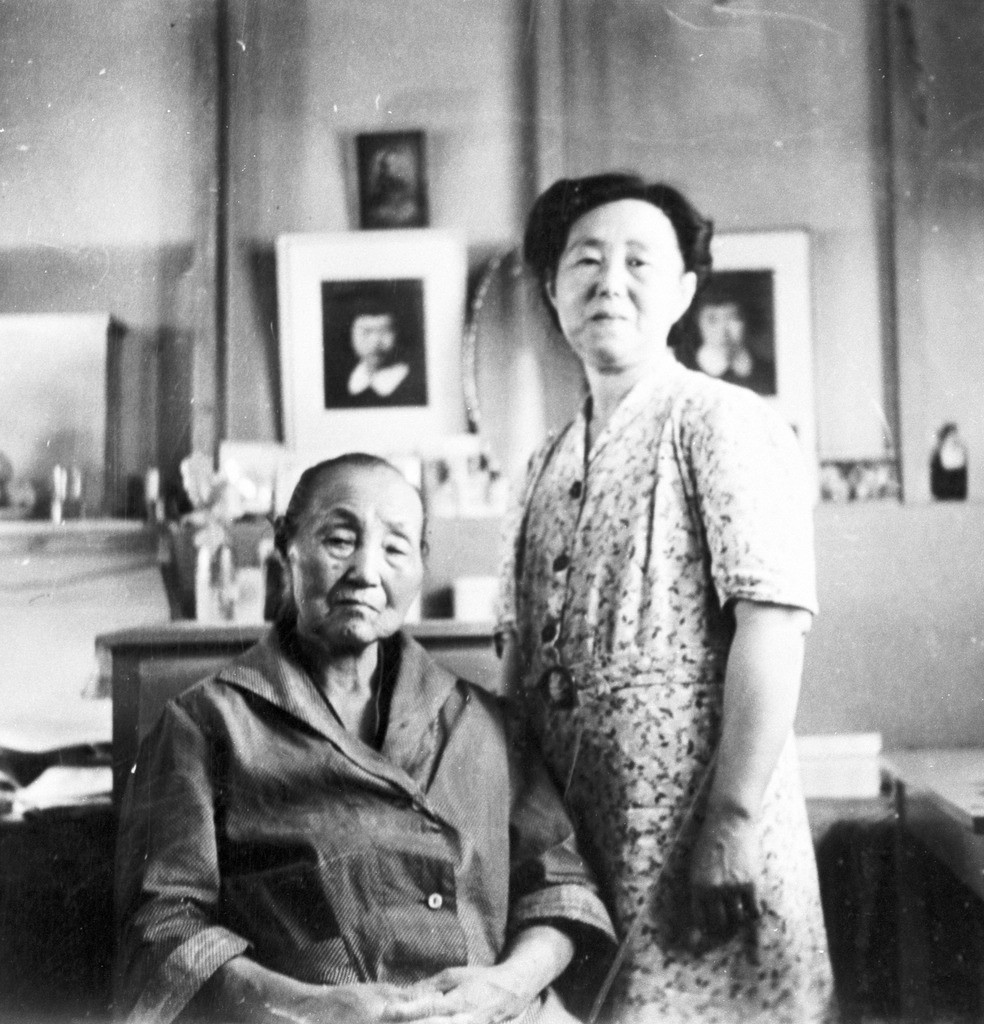Located in Southern Idaho, Minidoka concentration camp opened on August 10, 1942 and held some 13,000 Japanese Americans during World War II. The incarcerees — most of whom hailed from Washington and Oregon — were accustomed to relatively mild climates and struggled to adapt to Minidoka’s extreme temperatures and relentless dust storms.

Featured Collection: Friends of Minidoka
The War Relocation Authority, Minidoka Collection contains a set of previously undigitized negatives take between 1943 and 1945 at Minidoka. These negatives were held at the National Archives and were digitized by the Friends of Minidoka. Topics include: camp scenes, education, fire crews, farming, religion, sports, and vocations.
Oral histories
Barren Living Conditions in Camp
Aya Uenishi Medrud grew up in Seattle, Washington and was incarcerated in the Minidoka concentration camp, Idaho. In this clip, she talks about the difficult living conditions at Minidoka.
Sand Everywhere in Camp
Frank Yamasaki was sent to the Minidoka concentration camp, Idaho, during World War II. In this clip, he describes the copious amounts of sand in the camp.
First Impressions of Minidoka
Robert Mizukami, originally from Fife, Washington, was sent to the Minidoka concentration camp, Idaho. In this clip, he talks about his early impressions of camp.
Encyclopedia entries
Minidoka
Located in south-central Idaho, the euphemistically named Minidoka Relocation Center held a largely urban population consisting in large part of Japanese Americans from Seattle, Washington, and Portland, Oregon, as well as elsewhere in Oregon.
Minidoka Irrigator (newspaper)
The Minidoka Irrigator (September 10, 1942 - July 28, 1945) was a weekly newspaper published at the Minidoka Relocation Center located in Hunt, Idaho. It was one of three WRA camp newspapers to be printed rather than mimeographed.
Blog Posts

Issei Mothers Played an Important Role in the Draft Resistance Movement
The resistance of nearly 300 young men who refused to be drafted into the U.S. military out of U.S. concentration camps has become a prominent part of the Japanese American WWII incarceration story. But there is an equally inspiring — and largely forgotten — story about hundreds of Issei mothers who also protested the draft from within the camps.

10 Little Known Facts of Life at Minidoka
Located in Southern Idaho, Minidoka concentration camp opened on August 10, 1942 and held some 13,000 Japanese Americans during World War II. The incarcerees — most of whom hailed from Washington and Oregon — were accustomed to relatively mild climates and struggled to adapt to Minidoka’s extreme temperatures and relentless dust storms. They also endured lesser-known travails. Read on for untold stories of life at Minidoka.

The Final “Confusing, Cumbersome” Days in Minidoka Concentration Camp
Historical accounts of Japanese American incarceration often pay far more attention to the beginning than the end. But the scenes of camp officials hustling bewildered inmates onto trains in late 1945 bear a striking resemblance to the forced removal from the West Coast just three years earlier. Michi Weglyn colorfully described this time as “an incredible mass evacuation in reverse.”

Educational Material Ugly History: Japanese American incarceration camps
Short film and curriculum teaching Japanese American incarceration history through one woman’s story. Produced by TED-Ed with Densho.
On December 7, 1941, 16 year-old Aki Kurose shared in the horror of millions of Americans when Japanese planes attacked Pearl Harbor. Unbeknownst to her, this shared experience would soon leave her family and over 120,000 Japanese Americans alienated from their country, both socially and physically.

Exploring Your Family History
Over the past two decades Densho’s extensive online resources have become increasingly useful as a tool for Japanese American families to explore their heritage. The Densho Family History Program’s mission is to help members of the Japanese American community connect with their history through education, training, access to genealogical tools, and preservation of historical materials.
Acknowledgement
Funding made possible by The Henri and Tomoye Takahashi Charitable Foundation, and the National Park Foundation.
